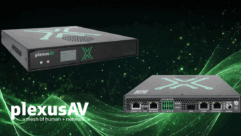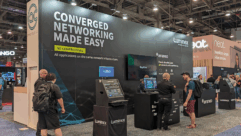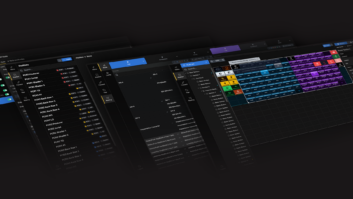A Changed InfoComm International Preps in Las Vegas
Jun 14, 2007 12:00 PM,
By John McKeon
The AV industry audience that gathers in Anaheim, Calif., this week for InfoComm International will be a very different group, with very different priorities from the people who gathered at the InfoComm of a decade or so ago. What’s more, these changes in the recent past point the way to more evolution in the years ahead.
Almost on the eve of the 2007 show, InfoComm announced plans to co-locate its 2008 event in Las Vegas with NXTComm, billed as “the only venue where the business and technology of communications, information and entertainment meet.” Randal Lemke, PhD, executive director of InfoComm, commented that this alliance reflects the fact that the long-discussed AV-IT convergence has actually occurred, fundamentally changing the business priorities of nearly everyone in the professional AV environment.
This year’s InfoComm, with some 800 exhibitors, will run June 15-21 at the Las Vegas Convention Center. Looking back over the past decade, it’s easy to see the big changes that have taken place.
A decade ago, InfoComm was chiefly famous for its Projection Shoot-Out, a side-by-side comparison venue in which projectors of different types displayed common content for visitors to evaluate. The Shoot-Out, launched in the early 1990s, had grown into a large event for which InfoComm published visitors’ guides, content CDs, and other supporting materials.
Back then, though, projectors were strictly a pro-channel product. But trends were already afoot to change that. More than a decade ago, in 1996, Texas Instruments introduced its Digital Light Processing technology at InfoComm, partnering with a group of projector manufacturers. Over the ensuing years, the new technology, along with new LCDs and other tools, led to a flood of lightweight, inexpensive products that changed the projector from an installed product to a basic office machine.
Lemke noted recently in a Sound & Video Contractor (To listen to the interview, click here.) interview that the first large-scale introduction of plasma displays came at his own first InfoComm in 2000. “Plasmas were just the rage,” he says. About the same time, companies such as AMX and Crestron were introducing and refining systems to control multiple AV system assets through user-friendly interfaces.
These powerful combinations accelerated the adoption of sophisticated AV systems throughout the business world. “Customers of 15 or 20 years ago were technology pioneers, and tolerant of complexity,” Lemke says. “Now, the customer wants it to work without having to understand it.”
Digital signage will be the subject of scores of exhibits, numerous seminars, and a special Application Showcase at Infocomm 2007, reflecting its status as a booming pro AV market. But as recently as 2000, it wasn’t even on the radar screen.
The following year, 2001, saw the introduction of the first projector with a built-in network connection. Facilitated by advances in DLP and LCD technologies, “digital” and “networked” became the industry’s bywords. So has “collaboration,” as ample bandwidth for high-speed data transfer has become almost ubiquitous. InfoComm will offer special features on collaborative conferencing and digital content creation, among other events.
Today, the buzz is all about Internet protocol connectivity and the AV tools that thrive in an IT-driven environment. InfoComm has evolved, Lemke says, from a display show to a true systems integration show. Now, he adds, it’s time to anticipate “the next evolution…very rich media in all different environments.”










